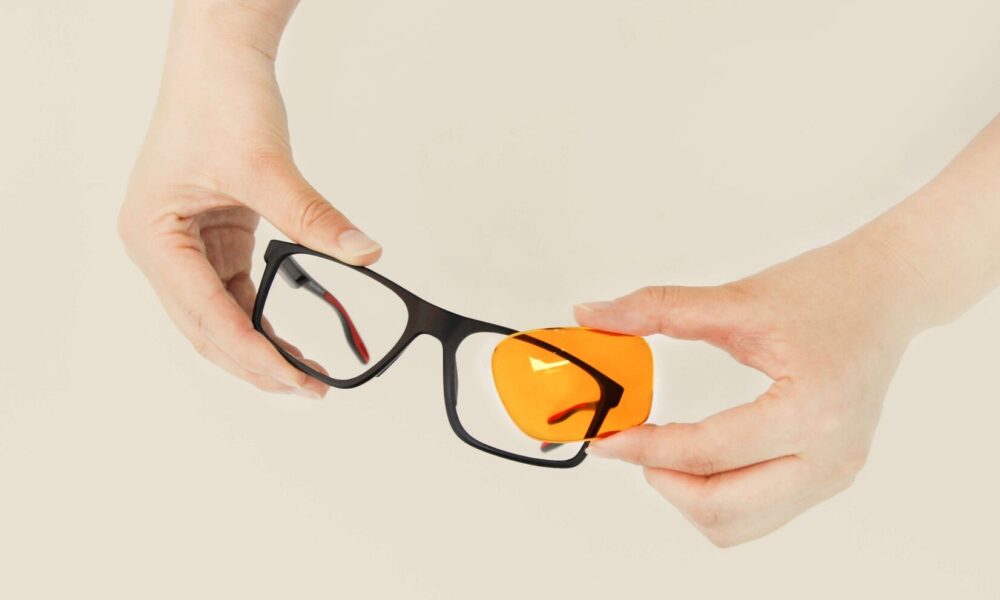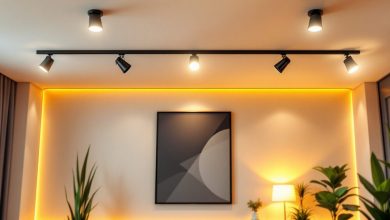Tinted Glasses vs. Tinted Prescription Glasses: Why Customization Is Key

If you spend more than four hours a day staring at screens, you may have noticed that even with different types of colored lenses, your eyes still feel dry and you sometimes wake up in the middle of the night for no reason. The issue may not be that these lenses are ineffective, but rather that you’re using generic, non-prescription eyewear. These off-the-shelf options—whether clear, yellow, or other tints—might not be the optimal shade for your needs, and thus fail to deliver the full benefits they promise. This is why I prefer tinted prescription glasses, offering customized solutions for both vision correction and eye protection.
The Case for Colored Lenses in Everyday Life
Modern lifestyles demand more than just vision correction. Different tints in eyewear not only enhance style and comfort but also play a crucial role in shielding your eyes from ultraviolet rays and digital glare. The majority of people today are looking for both UV and blue light protection. Most polycarbonate lenses already provide UV400 coverage, but blue light remains a challenge, especially with the omnipresence of digital devices. Prolonged exposure to screens can lead to a range of issues, from eye strain and dryness to disrupted sleep cycles and circadian rhythm disorders. Choosing the right lens color for your daily routine is no longer a luxury, but a necessity.
Navigating the World of Lens Tints
Clear lenses remain the most popular choice, especially for those who wear corrective eyewear. Manufacturers often add a subtle gray or violet hue to these lenses to lightly filter blue light without distorting color perception. For those with higher sensitivity or longer screen time, yellow or green-tinted lenses offer stronger protection. If your daily digital exposure is brief, lighter tints suffice; for extended use, deeper shades like rose or amber are more effective. For individuals chronically exposed to artificial blue light, orange and red lenses can help preserve melatonin levels and restore healthy sleep patterns.
Why Custom-Tinted Lenses for Vision Correction Matter
The comparison between tinted prescription glasses and regular tinted glasses:
Refractive errors—such as nearsightedness, farsightedness, and astigmatism—are widespread. If you already wear clear corrective glasses, it’s worth considering a pair of custom-tinted lenses for daily protection. Here’s why:
Most people with vision correction needs try to address blue light exposure in one of three ways:
– Wearing contact lenses plus non-prescription blue light blockers
– Using fit-over or clip-on blue light glasses atop their prescription frames
– Investing in custom-made colored corrective lenses
Wearing contacts long-term can increase the risk of eye irritation and isn’t ideal for all-day use. Fit-over and clip-on solutions often cause discomfort and may not align perfectly with your prescription. Custom-tinted lenses, on the other hand, offer seamless integration of your prescription, preferred tint, and optimal comfort for long-term wear.
The Importance of Blue Light Protection
While blue light doesn’t immediately damage your eyes, chronic exposure can lead to digital eye strain, circadian rhythm disruption, and even accelerate retinal aging. Studies published in the Journal of Biomedical Optics in 2021 confirm that regular use of blue light filtering eyewear can reduce fatigue and improve sleep, especially for those who use screens late at night.
Digital Eye Strain Is Real
Research shows that nearly 65% of people who used digital devices for 5+ hours per day reported experiencing symptoms of digital eye strain, dryness, headaches, neck pain, and reduced concentration. Custom lenses can alleviate these issues by minimizing glare, filtering specific blue light wavelengths, and enhancing visual clarity.
How to Choose the Right Colored Lenses
When selecting eyewear, consider:
– Your typical lighting environment
– How many hours a day you use digital devices and when discomfort occurs
– Which lens colors you prefer after using clear lenses
– Your detailed eye prescription
These insights can be gathered through self-observation and consultation with an eye care professional.
Real-Life Examples
Alex Chen, a 28-year-old video editor, spent years burning the midnight oil editing footage for his YouTube channel. Despite wearing standard blue light glasses, he found himself wide awake at 2 AM, his mind racing from hours of screen time.
“After my optometrist suggested trying red-tinted prescription lenses before bed, it was like flipping a switch,” Alex recalls. “Now, when I put them on around 10 PM while winding down, my brain actually gets the signal that it’s nighttime. I fall asleep faster, and my sleep quality has improved dramatically.
Sarah Williams, a 35-year-old marketing manager, used to end every workday with gritty, tired eyes. “By 4 PM, I’d be rubbing my eyes constantly, and my nighttime Netflix binge would leave me with headaches,” she says.
Her optician recommended green-tinted prescription lenses with blue light and UV protection. “I was skeptical about the tint at first, but now I won’t go back,” Sarah explains. “They cut the glare from my office lights and computer screen without making everything look yellow. Even my evening scroll sessions feel less straining.
UV Protection Indoors
Many believe UV protection is only necessary outdoors, but fluorescent and LED lighting indoors also emit low levels of UV radiation. Prolonged exposure can contribute to cataracts and macular degeneration. Many custom corrective lenses now include built-in UV protection. Lighter tints such as yellow, green, amber, or rose can provide UV400 coverage, making them suitable for both indoor and outdoor use. Unlike dark sunglasses, these tints don’t overly block natural light, allowing your brain to maintain healthy melatonin rhythms for alertness during the day and restful sleep at night.
The Advantages of Custom Lenses
With custom-made blue light filtering eyewear, you can expect:
– Precise vision correction (myopia, hyperopia, multifocal, etc.)
– A variety of color options (rose, gray, amber, and more)
– Multiple lens materials (lightweight, impact-resistant, etc.)
– Functional coatings (anti-reflective, water-repellent, scratch-resistant)
Whether you’re a teacher, designer, gamer, or recovering from eye surgery, you can tailor your eyewear to your lifestyle and aesthetic preferences.
Balancing Style and Function
Today’s custom lenses are as much about fashion as they are about eye health. Choose gray or brown for a professional look, rose or amber for creative flair, or minimalist rimless blue light blockers for a sleek, modern vibe.
If you spend long hours in front of screens and struggle with dry eyes, poor focus, or sleep disturbances, generic off-the-shelf glasses may not be enough. Investing in custom-tinted corrective eyewear is the modern solution for visual comfort and wellness. This isn’t just an upgrade in vision—it’s a commitment to your long-term health, letting you experience the full benefits of the right lens color in your daily life.

Source: Tinted Glasses vs. Tinted Prescription Glasses: Why Customization Is Key




